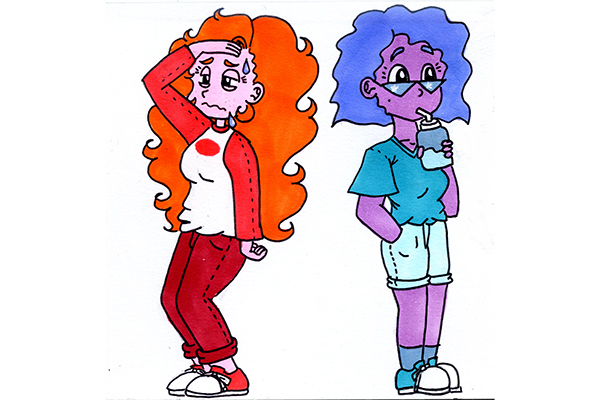For students walking between their dorms or apartments to classes, the Austin heat can be unbearable. However, there are measures that can be taken to protect against heat-related
illness while on campus.
According to the Weather Channel, August has been historically Austin’s hottest month, with an average high of 97 degrees. Austin Emergency Medical Services has responded to 148 heat-related incidents since Aug. 7, said Christa Stedman, Austin-Travis County EMS deputy public information officer. Stedman said there are three main categories of heat-related illness.
“There’s heat cramps, which is the first level of severity. Then next is heat exhaustion and then heat stroke, which is life threatening,” Stedman said.
Stedman said some of the signs of the more severe heat-related injuries are heavy sweating, weakness, clammy skin, nausea, vomiting, a fast, weak pulse, dark urine or not needing to urinate. The more severe symptoms for heat stroke include high body temperature, hot, red, dry skin and altering levels of consciousness.
Melinda McMichael, University Health Services’ interim executive director and chief medical officer, said heat strokes occur when the body can no longer regulate its temperature. McMichael said a classic sign of heat stroke is when the body stops sweating.
McMichael said it is necessary to hydrate and cool off as often as possible to prevent heat exhaustion.
“It’s important not to try to do a lot of exercise in the heat of the day,” McMichael said. “You need to schedule your exercise not in the middle of the afternoon and then, of course … always wear sunscreen.”
Stedman said it is necessary to be prepared before even going into the heat by prehydrating and wearing light-colored, loose-fitting clothing.
“Then, once you’re in the heat, you need to be hydrating,” Stedman said. “Two to four eight-ounce cups of water every hour when you’re outside for a long period of time or when you’re doing exercise or any sports.”
Journalism sophomore Shereena Mathew said she wears shorts, hats and sunscreen to protect her body from the heat.
“Loose cotton shirts really help because even if you sweat, they dry pretty fast, so it’s nice and cool when you go into a building (with) air conditioning,” Mathew said.
To help another person suffering from a heat-related illness, Darren Noak, Austin-Travis County EMS deputy public information officer, said a mantra to remember is “move them, cool them, call 911.”
“We want to get that person out of that particular … hot environment,” Noak said. “So it may just be getting them into the shade but preferably getting them into a more climate controlled environment (with) air conditioning. Cool them by active measures, so maybe get ice packs.”
Noak said if a concerned citizen does not know what to do, they should call a medical professional, such as EMS, to make an evaluation and aggressively treat them if needed.
“We always recommend that if you have any questions, you call 911,” Stedman said. “Always err on the side of caution.”















